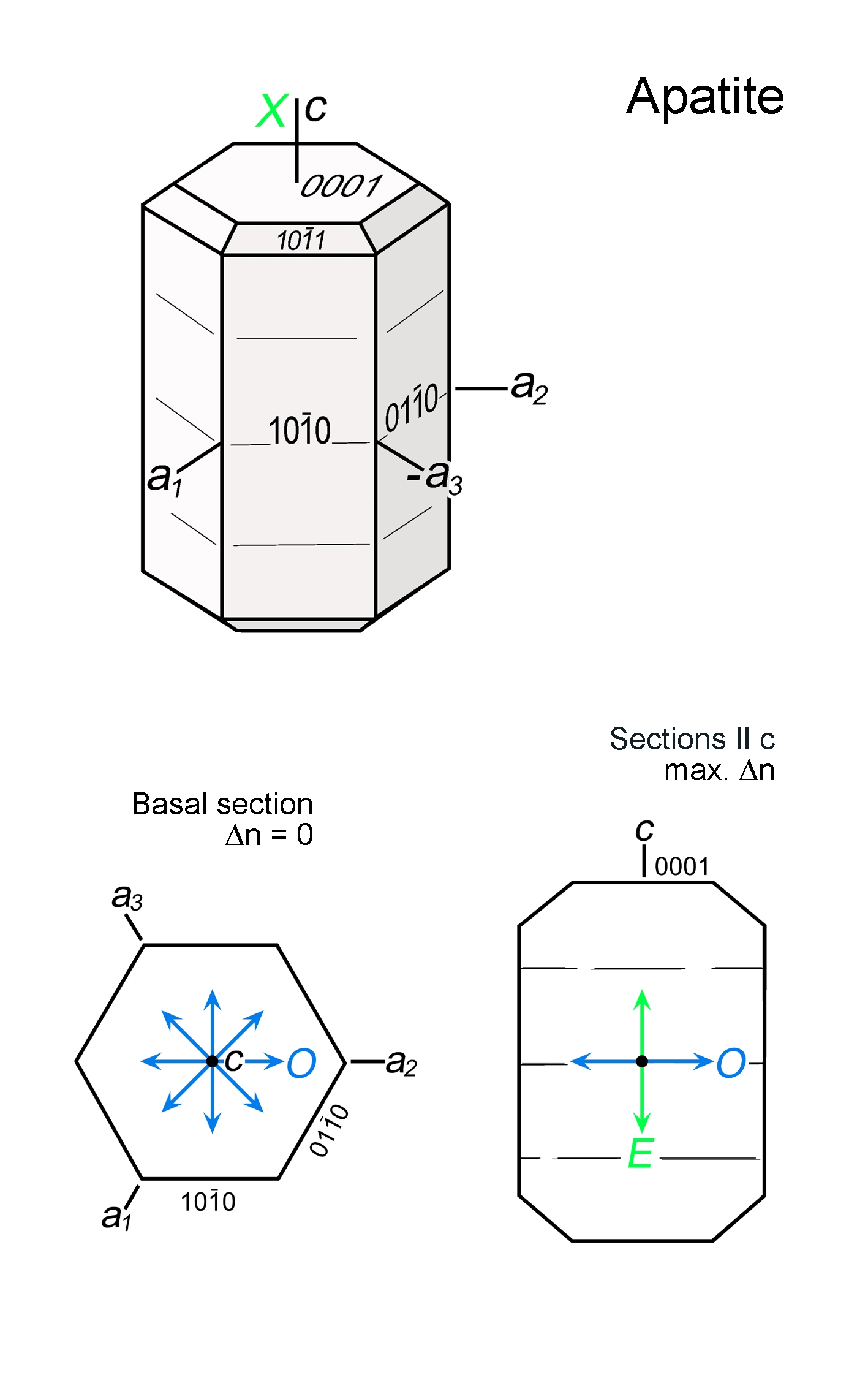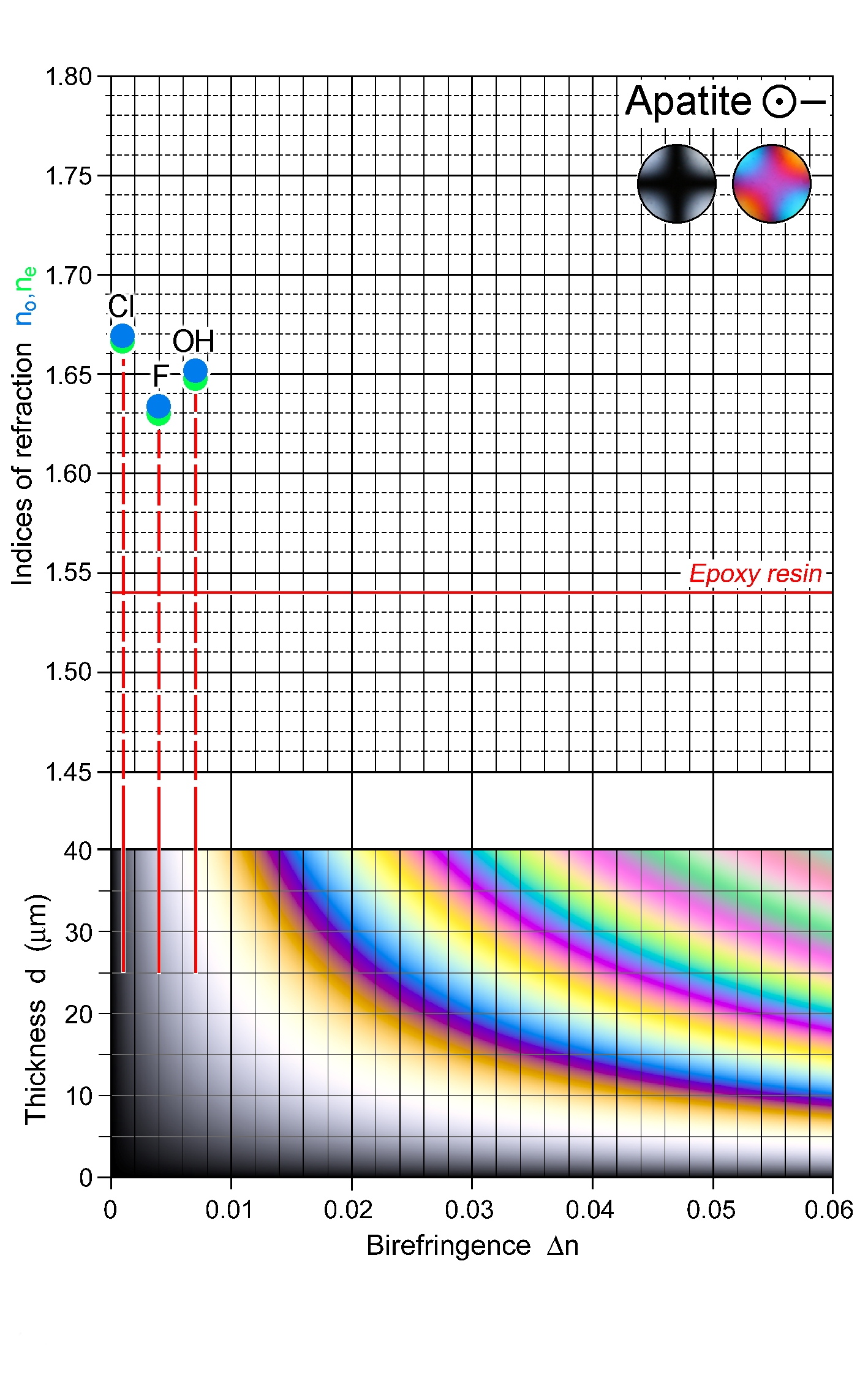|
| Formula | Ca5(PO4)3(F,OH,Cl) |
| | Optic class & sign | Uniaxial negative |
| | Relief | Moderate, positive |
| | Refractive indices | no = 1.629 -1.667
|
|
ne = 1.624 -1.665
|
|
| n increases from F- to Cl-apatite; OH-apatite is intermediate between those |
| | Birefringence (max.) | 0.001 - 0.007 |
| | | OH-apatite has the highest Δn, Cl-apatite the lowest Δn |
| | Sign of elongation | Length-fast, l (-) in sections elongate in c |
| | Interference figure | Broad, diffuse isogyre cross; low first-order dark to light greys; anomalous biaxial varieties (2V max 20°) occur |
| | Colour / pleochroism | Commonly colourless, but may be weakly coloured (highly variable colours: yellow, green, brown, orange, red, violet, blue); pleochroism weak to moderate (E>O) |
| | Zoning | |
|
|
| Form | Habit | Short- to long-prismatic, acicular; rarely tabular |
| | | Surface | Commonly euhedral to subhedral; hexagonal basal sections; also granular aggregates |
| | Cleavage | {0001} poor, {1010} very poor |
| | Twinning | Rare contact twins and sector twins |
| | Extinction | Straight to prism faces |
|
|
| Reaction textures | |
| | Alteration / decomposition | Stable |
|
|
| Occurence | Ign | In a large variety of igneous rocks, from ultramafic (incl carbonatites) to felsic; common in granitic pegmatites |
| | | Met | Metamorphic rocks of variable bulk composition, over a wide range of pressure-temperature conditions |
| | | Sed | Detrital in clastic sediments and sedimentary rocks; phosphate beds and nodules, oolites, organic-derived fragments (bones, fish scales, teeth) |
| | | Hyd | Veins and cavities; Alpine-type quartz-adularia veins |
| | | Other | |
|
|
| Distinctive properties | Moderate relief, low birefringence, habit, poor cleavage |
| | Additional comments | Typically present in accessory amounts, rarely as a major rock-forming mineral; fluor-apatite is the most common variety; carbonate-apatite has lower refractive indices and higher birefringence compared with common apatite |
|
|

 Images
Images 


 Images
Images 
